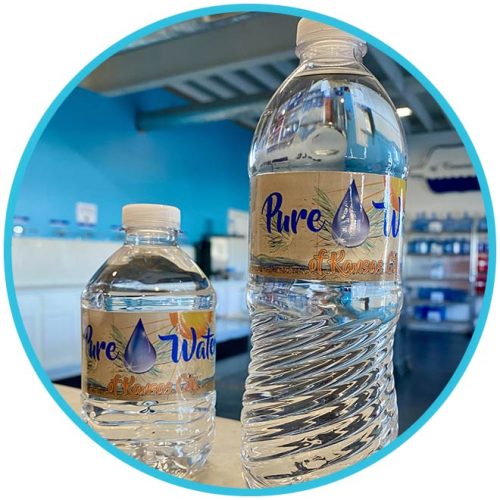by Sang Whang
Among the people who question the validity of alkaline water, the biggest question is; “What happens to the alkaline water once it reaches the stomach, which is highly acidic?” People who have some knowledge of the human body, including medical doctors, ask this question. Let me answer that question once and for all to erase any doubts about the benefits of alkaline water.
In order to digest food and kill the kinds of bacteria and viruses that come with the food, the inside of our stomach is acidic. The stomach pH value is maintained at around 4. When we eat food and drink water, especially alkaline water, the pH value inside the stomach goes up. When this happens, there is a feedback mechanism in our stomach to detect this and commands the stomach wall to secrete more hydrochloric acid into the stomach to bring the pH value back to 4. So the stomach becomes acidic again. When we drink more alkaline water, more hydrochloric acid is secreted to maintain the stomach pH value. It seems like a losing battle.
However, when you understand how the stomach wall makes hydrochloric acid, your concerns will disappear. A pathologist friend of mine gave me the following explanation. There is no hydrochloric acid pouch in our body. If there were, it would burn a hole in our body. The cells in our stomach wall must produce it on an instantly-as-needed basis. The ingredients in the stomach cell that make hydrochloric acid (HCl) are carbon dioxide (CO2), water (H2O), and sodium chloride (NaCl) or potassium chloride (KCl). NaCl + H2O + CO2 = HCl + NaHCO3 or KCl + H2O + CO2 = HCl + KHCO3.
As we can see, the byproduct of making hydrochloric acid is sodium bicarbonate (NaHCO3) or potassium bicarbonate (KHCO3), which goes into blood stream. These bicarbonates are the alkaline buffers that neutralize excess acids in the blood; they dissolve solid acid wastes into liquid form. As they neutralize the solid acidic wastes, extra carbon dioxide is released, which is discharged through the lungs. As our body gets old, these alkaline buffers get low; this phenomenon is called acidosis. This is a natural occurrence as our body accumulates more acidic waste products. There is, therefore, a relationship between the aging process and the accumulation of acids.
By looking at the pH value of the stomach alone, it seems that alkaline water never reaches the body. But when you look at the whole body, there is a net gain of alkalinity as we drink alkaline water. Our body cells are slightly alkaline. In order for them to produce acid, they must also produce alkaline, and vice versa; just as a water ionizer cannot produce alkaline water without producing acid water, since tap water is almost neutral.
When the stomach pH value gets higher than 4, the stomach knows what to do to lower it. However, if the pH value goes below 4, for any reason, the stomach doesn`t know what to do. That`s why we take Alka-Seltzer, which is alkaline, to relieve acidic stomach gas pain. In this case, hydrochloric acid is not produced by the stomach wall, therefore, no alkaline buffer is being added to the blood stream.
Let me give you another example of a body organ that produces acid in order to produce alkaline. After the food in the stomach is digested, it must come out to the small intestine. The food at this point is so acidic that it will damage the intestine wall. In order to avoid this problem, the pancreas makes alkaline juice (known as pancreatic juice). This juice is sodium bicarbonate, and is mixed with the acidic food coming out of the stomach. From the above formulae, in order to produce bicarbonates, the pancreas must make hydrochloric acid, which goes into our blood stream.
We experience sleepiness after a big meal (not during the meal or while the food is being digested in the stomach), when the digested food is coming out of the stomach; that`s the time when hydrochloric acid goes into our blood. Hydrochloric acid is the main ingredient in antihistamines and that is what causes drowsiness.
Alkaline or acid produced by the body must have an equal and opposite acid or alkaline produced by the body; therefore, there is no net gain. However, alkaline supplied from outside the body, like drinking alkaline water, results in a net gain of alkalinity in our body.









Follow Us!